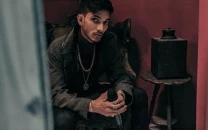The child marriage debate
If consent is central to Islamic institution of marriage, is argument in favour of parental prerogative plausible?

The child marriage debate
Under the legal regime of the Child Marriage Restraint Act, 1929, the prescribed minimum age for marriage of girls and boys is 16 and 18 years, respectively. Marriages of individuals much younger are, however, solemnised each day at risk of an insignificant criminal penalty and practically without consequence to the sanctity or validity of the union. The law has limited deterrent effect. Pakistan figures high in the incidence of child marriage in the world. Of the 60 million girls married worldwide, under the age of 18 in 2012, 42 per cent were from Pakistan.
Last week’s resolution represents the most recent instance of legislative activism, at the national and provincial levels, to respond to this culture of impunity. Such activism has centred on a two-fold strategy, at one, targeting weak penalty and enforcement structures within the 1929 Act, and at the other, lobbying for an increase in the minimum age for marriage of girls to 18 years. The Sindh Child Marriage Restraint Act, 2013 passed through the Sindh Assembly earlier this year, achieves both objectives. However, a similar bill tabled before the National Assembly by Marvi Memon did not progress as far and instead triggered controversy.
Members of the Council of Islamic Ideology lashed out, condemning the proposed legislative amendments (in terms similar to those employed to oppose the resolution in the Punjab Assembly) as un-Islamic. Ostensibly, under religious law, the parental right to arrange the marriage of a child may be exercised at any point, but consummation of the relationship is permissible only at puberty. Scholars argue of a distinction between the nikah and rukhsati. No age limit is prescribed for the former, but the attainment of puberty is a necessary precondition for the latter.
Yet such argument is problematic. The Islamic contract of marriage is essentially consensual in nature. Judicial pronouncements by the superior courts, drawing on Islamic jurisprudence, have categorically stated that the consent of a “woman is the sine qua non of a valid marriage in the absence of which marriage [is] declared to be void”. An Islamic marriage contract entered into without the consent of the contracting parties is then unlawful and has no legal standing. It is also settled that the consent of a wali (a parent or other legal guardian) offers no legal substitute.
If consent is central to the Islamic institution of marriage, does the argument in favour of parental prerogative appear plausible? Does a nine-year-old male child or even a 13-year-old female possess the intellectual, emotional or social maturity to comprehend and take full responsibility for their decision to marry? Why must the age of maturity, for the purpose of marriage, be defined differently from the standard 18 years otherwise recognised under the law?
The “consent” argument is not the only logic one may employ to counter opponents of reform. As observed by Allama Hafiz Raza Kazim of Jamia Ashrafia, at a consultation session in Lahore, Islam places great emphasis on the health and welfare of young girls. The grave repercussions on the health, security, education and economic well-being of a child married off as a minor are not unknown. Early marriage increases the risk of depression, sexually-transmitted diseases, cervical cancer, obstetric fistulas, malaria and maternal mortality. It also usually results in an end to education, particularly of the female child — significant since one extra year of secondary schooling alone boosts girls' earning potential by 15 to 25 per cent.
To then mandate a particular minimum legal age of marriage commensurate with the mental readiness (as opposed to biological readiness) of a male/female for their role as spouse and parent, and with the view to ensure their well-being, is not necessarily un-Islamic. One must then recognise that religion and tradition are often hoisted as eventual trump cards to circumvent discussion on the existing practice of under-age marriage, and thwart what is essentially positive legislative activism for much-needed reform.
Published in The Express Tribune, December 30th, 2014.
Like Opinion & Editorial on Facebook, follow @ETOpEd on Twitter to receive all updates on all our daily pieces.
















COMMENTS
Comments are moderated and generally will be posted if they are on-topic and not abusive.
For more information, please see our Comments FAQ